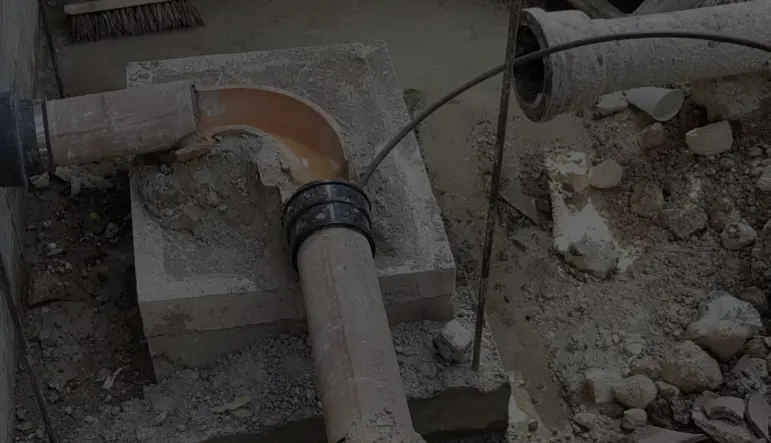 Add My Company
Add My Company
Sign In
Signs of a Collapsed Drain and What to Do
13-07-2023

A collapsed drain is exactly how it sounds, it is a drainage system that has undergone so much pressure / wear and tear that it has broken, or collapsed.This can be detrimental to the buildings that the collapsed drains are intended to be serving as the water is no longer traveling through the pipes and away from the structure, but is being allowed to sit and build up within the foundations of the building.There are various causes for collapsed drains, here are a few:Ground Movement – We all know those ground movements, whatever their cause is natural and unavoidable. If these movements are to happen in a location containing pipes, the pressure caused by the ground around the pipework can be enough to crush and collapse the pipes.General Wear – Another common cause of collapsed drains is general wear and tear. If your building’s pipework is old and stressed, it can be a matter of time before the materials used have degraded to the point of failure.Tree Roots – A generally quite avoidable cause for collapsed drains is tree root damage. If you allow tree roots to grow and develop around the location of your pipework, they can interfere and invade on your pipes, eventually even possibly crushing them.What Issues Can Arise from Collapsed Drains?Building foundations and water most definitely don’t go well together. This is why drain systems are in place to move your building’s used water away from your building. When these systems go wrong the results can be catastrophic on buildings if not dealt with ASAP.Here are some of the complications caused by collapsed drains:Foundation Rot – The wooden foundations of your building don’t do well when faced with large amounts of humidity. Over time water will cause your wooden foundations to rot, which can cause huge complications with the structural integrity of your building.Sewage – The implications of sewage being released around your home or work building are obvious. Nobody wants raw sewage anywhere near their building, this is because it can lead to a very unpleasant and unhealthy environment for the people within the building.Damp & Mould – If your walls and ceilings begin to absorb the water underneath your building, damp and mold can begin to form. This is bad for both the building and the people inside. Damp and moldy buildings are not only structurally flawed but can also be a host to sometimes life-threatening infections and respiratory conditions. How to Tell if Your Drains Are CollapsedIf you fear your drains may be damaged or collapsed, it is vital that you check as quickly as possible to avoid extensive property damage.There are various rather straightforward checks that can be done without the need of calling in an expert.Here are Our Recommended Checks for Damaged and/or Collapsed Drains:Look for Damp / Mould – If you suspect you might have a damaged drain system, a very quick and easy check would be to inspect the walls of your building for signs of damp and mold. Start at the bottom as damp rises. Go around the skirts of your walls and carefully look for any patches or spots of damp or mold. If you find traces of damp and mold, there’s a chance your drain(s) may well have collapsed.Slow Drainage – If your drains seem to have slowed and their performance has dropped, this can be a sign of collapsed drains. You should be able to notice this just by watching how well the water empties from your sinks and/or bathtub. Slow drains can also be caused by blockages though, so don’t take this as a sure-fire sign of collapsed drains.Foul Smells – If you’re able to notice foul sewage smells in your property, particularly in kitchens, bathrooms, and toilets, this can be a sign of damaged or collapsed drains. Again, this won’t certify that it is definitely a collapsed drain, but is definitely a worthwhile and easy check.Structural Damage – In some severe cases, a collapsed drain can cause the structure of your property to crack and damage near the source of the drainage leak. It is a good idea to check your property for cracks in walls and floors both internally and externally. If you should find any cracks, inspect them for humidity, as well as the area surrounding them.Subsidence – This one isn’t really likely to be a check you need to make. The water under your property can cause the building to sink into the ground. If your property has subsided at all, you’re likely to already know, and unfortunately, by this point, the odds are that you’ve had drainage issues for a very long time and most likely have many other related issues.Contact Drain 247 for Drain Repair Services in London & HertfordshireIf you require any more information or have any queries regarding the collapsed drain or drainage survey report, then please contact our drainage experts. Call us on 0800 612 8038 or you can complete our quick enquiry form to get your free, no-obligation quote
For more information on Signs of a Collapsed Drain and What to Do talk to Drain 247
Enquire Now
More Blogs
List your company on FindTheNeedle.

